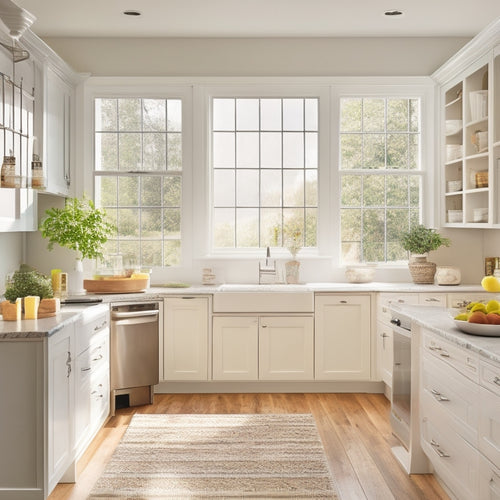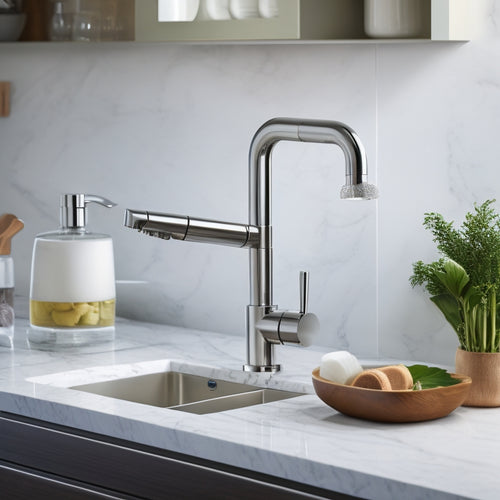
Mastering the Art of Darkroom Photography
Share
You're about to enter a precise, hands-on world where you'll enhance your photographic vision into museum-quality prints. Start by setting up your darkroom with essential supplies, prioritizing organization, lighting, and ventilation. Familiarize yourself with chemicals like developer, stop bath, and fixer, and understand their functions. Master printing techniques by adjusting exposure, tweaking aperture and timer, and experimenting with contrast control. As you practice, develop a keen eye for exposure and contrast. With patience and persistence, you'll discover advanced methods like bleaching and toning, and soon, your prints will take on a life of their own, revealing just how much more there is to explore.
Key Takeaways
• Organize your darkroom with essential supplies, prioritize lighting, and maintain ventilation to prevent mistakes and ensure safety.
• Master exposure adjustment by tweaking the enlarger's aperture and timer to achieve optimal contrast control in your prints.
• Develop a keen eye for contrast and exposure through practice and experimentation with different f-stops and exposure times.
• Handle hazardous chemicals with safety precautions, wearing gloves and an apron, and follow guidelines for chemical disposal.
• Experiment with advanced darkroom methods like bleaching, toning, and polytoning to create high-quality, creatively manipulated prints.
Darkroom Essentials and Setup
To set up a functional darkroom, you'll need to gather essential supplies, including an enlarger, safelight, timer, trays, tongs, and chemicals, which must be carefully arranged to guarantee efficient workflow and minimize mistakes.
Don't forget to prioritize darkroom organization and lighting - a vital well-lit workspace with minimal glare is essential for accurate printing. Proper ventilation is also key; make sure good airflow to prevent inhaling harmful chemical fumes.
When arranging your workspace, consider a logical flow from exposure to development, with ample space for each station. Remember, a tidy darkroom is a happy darkroom!
Chemicals and Equipment Basics
You'll be working with four essential chemicals in the darkroom: developer, stop bath, fixer, and hypo clear, each playing an important role in transforming your negatives into stunning prints. But before you start, it's vital to understand the basics of chemical handling and equipment maintenance.
| Chemical | Function |
|---|---|
| Developer | Converts latent image to visible image |
| Stop Bath | Halts development process |
| Fixer | Removes silver halides from paper |
| Hypo Clear | Removes residual fixer from paper |
Mastering Printing Techniques
As you step into the darkroom, it's time to put your knowledge of chemicals and equipment to the test by practicing the fundamental techniques of printing.
Now, it's all about mastering the art of exposure adjustment. You'll need to tweak the enlarger's aperture ring and timer switches to get the perfect print.
Contrast control is also vital - too much or too little can ruin your image. To achieve the ideal balance, you'll need to experiment with different f-stops and exposure times.
Don't be discouraged if it takes a few trial runs; with practice, you'll develop a keen eye for contrast and exposure.
Safety Precautions and Tips
Regularly, darkroom printing requires you to handle hazardous chemicals, making it important to take safety precautions to protect yourself and your workspace. You should always wear gloves and an apron to prevent skin contact and stains on your clothes.
Guarantee proper ventilation in your darkroom to avoid inhaling toxic fumes. Use a safe light to prevent accidental exposure of your photos, and follow the manufacturer's guidelines for chemical disposal. Don't forget to dispose of chemicals like fixer according to Kodak's safety guide.
It's also vital to maintain cleanliness in the darkroom to prevent accidents and contamination. By taking these precautions, you'll be able to focus on perfecting your printing techniques without worrying about your safety.
Advanced Darkroom Methods
With safety protocols in place, you can now explore advanced darkroom methods to refine your printing skills and achieve high-quality results. One of the most exciting aspects of darkroom printing is creative manipulation, where you can experiment with techniques like bleaching, toning, and hand coloring to create unique prints. Advanced toning techniques, such as split toning and polytoning, can also add depth and interest to your images.
Here are some advanced darkroom methods to try:
| Technique | Description |
|---|---|
| Bleaching | Lightening areas of the print to create contrast |
| Split Toning | Applying different toners to different areas of the print |
| Polytoning | Using multiple toners to create a range of colors |
Frequently Asked Questions
Can I Use a Regular Light Bulb in the Darkroom Instead of a Safe Light?
"No way, you can't use a regular light bulb in the darkroom! It'll ruin your prints due to light sensitivity. Stick to specialized safe lights, like red or amber bulbs, designed for darkroom use to avoid overexposure."
How Do I Organize My Darkroom to Maximize Space and Efficiency?
"Imagine your darkroom as a dance floor! You're the choreographer, efficiently directing traffic between workstations. Maximize space with Darkroom Flow by creating zones, using Space Hacks like shelving and carts, and cleverly storing chemicals, ensuring a smooth, safe workflow."
Are There Any Alternatives to Traditional Photographic Paper?
You're wondering if you're stuck with traditional photo paper? Not quite! You can explore digital media like inkjet prints or even inkless printing methods, which use light to create images, offering a fresh spin on darkroom printing.
Can I Reuse Chemicals to Save Money and Reduce Waste?
Did you know that 70% of darkroom enthusiasts waste money on contaminated chemicals? You're smart to ask: reusing chemicals might seem like a cost-effective move, but it's a recipe for chemical contamination, ruining your prints and costing more in the long run.
How Do I Troubleshoot Common Printing Mistakes and Errors?
You're stuck with subpar prints? Don't freak out! Analyze the error: check print quality, inspect your process, and identify the culprit. Is it over/underdevelopment, incorrect exposure, or contamination? Once you pinpoint the issue, you can troubleshoot and refine your technique to achieve perfection.
Related Posts
-

Corner Kitchen Storage Solutions to Boost Efficiency
To boost efficiency in your kitchen, you'll want to strategically utilize corner storage solutions. Start by measurin...
-

Revolutionize Your Kitchen Sink With Must-Haves
Elevate your kitchen sink experience with must-have essentials that prioritize organization, efficiency, and style. S...

